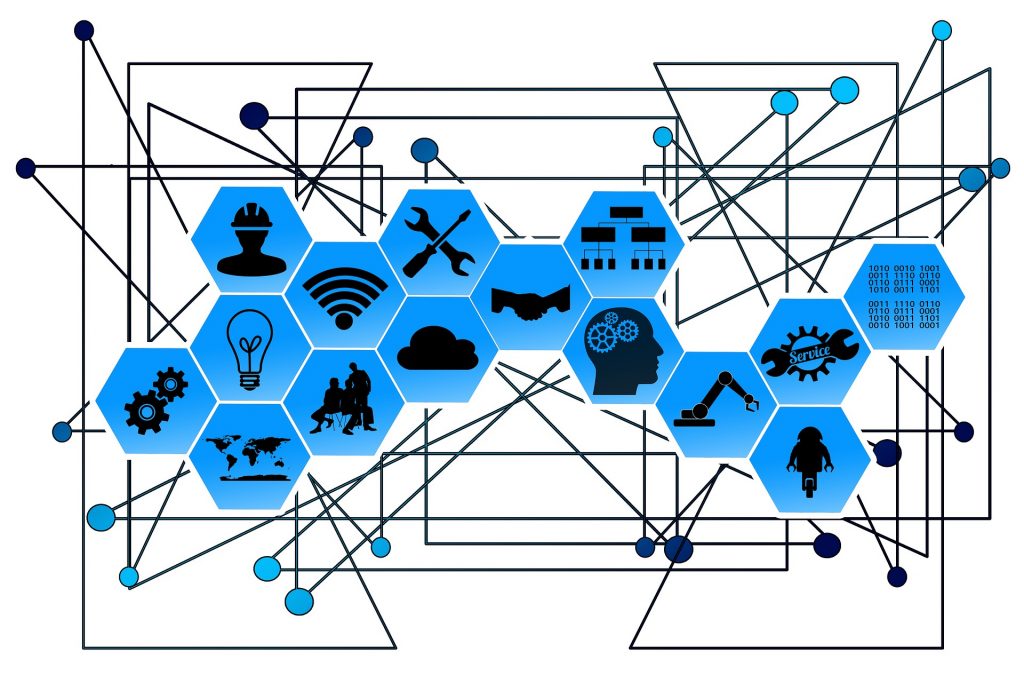A Cryptocurrency Primer
Cryptocurrency, Digital Tokens, Virtual Currency all refer to a unit of value existing only within a specialized computer program as a discrete set of computer data, and not as a physical object like a traditional government fiat currency, i.e., a coin or bill. The value assigned to this discrete data set is by consent of those who control it. Since it exists only in specific computer programs on computer nodes controlled by subscribing parties (peer-to-peer), it is not tied to any material object or governmental economy. This concept of data acquiring intrinsic value has been known in computer programming circles for several decades. Other examples of decentralized data transfer include Napster, Skype and BitTorrent.
Origin of Bitcoin
However, not until the 2008 whitepaper by nom de guerre Satoshi Nakamoto was a workable digital currency, Bitcoin, described in detail by a set of computer protocols in which a predefined data set could be presented as the digital token, Bitcoin. This defined digital token, Bitcoin, could then be used as a substitute for fiat currencies in transactions between subscribing parties. The transactions would be recorded on a digital ledger, identical copies of which were distributed concurrently on a plurality of peer-to-peer computer nodes. The recorded ledger transactions, with the addition of cryptography, would then be grouped together by a node program into finite sets called ‘blocks’.
The ‘Block’ of Blockchain
The components of a ‘block’ are generally described as follows:
- Block Header comprising the hash of the current transaction,
- Plus the Hash of the previous Header,
- Plus Nonce (a cryptographic number used one time to authenticate, re-direct etc),
- Plus a timestamp,
- And any other data required by the protocol.
Then the ‘blocks’ were linked seriatim into a digital ‘chain’ – all occurring by a computer program on a node. Hence the terms, ‘blockchain’ and ‘cryptocurrency’. Once the blockchain ledger was updated with a new block on one node, that result was copied to all other node ledgers. Thus, no one subscriber could alter the transaction record since all subscribers had identical copies of the ledger. Thus was born a workable, trustless, decentralized peer-to-peer network where no central authority was required – or was watching.
Assuming new transactions are constantly sent to the P2P network through the protocol, a new block of transactions is generated approximately every ten minutes and each node updates its ledger. Thus all ledgers are identical.
Blockchain DLT – Distributed Ledger Technology
Thus, blockchain technology may be summarized as follows:•
- Each cryptocurrency transaction is unique and secured through cryptography,
- Each transaction is maintained on a trusted digital ledger,
- Each ledger is maintained on a plurality of decentralized nodes without a central authority,
- The decentralized nodes form a consensus of which transactions are valid and are then added to the blockchain.
Add … Cryptography
Cryptography makes the digital asset transaction possible by guaranteeing it authenticity. The transaction data set input generally comprises sender, recipient, quantity, amount, description, location, timing, and any other necessary variable. Next, a cryptographic algorithm is applied which produces a data set result known as a ‘cryptographic hash’ of fixed length. The data may be verified by hashing it on any other subscribing program with the same result. Since the hash cannot be reversed the input is considered anonymous unless a public key and private key are available to de-code the hash.
One of the negative aspects of the Bitcoin blockchain protocol is that the chain continues to grow with each additional block. The protocol requires that the blockchain be verified each time to prevent alteration of prior transactions. Thus the computational power to continuously review, compose and add new verified blocks of completed transactions to the chain grows exponentially over time. It was miniscule at first only requiring a few home-style computers. However, now with ten years of accrued transactions, this expo-hashing is so resource intensive that few individuals have the computational capacity to add transactions to the chain.
Miners
To incentivize dedicated hashing capacity – and thus the existence and maintenance of the cryptocurrency – dedicated subscribers called ‘miners’ are rewarded with the cryptocurrency (12.5 Bitcoin per block in 2018) depending upon the amount of new hashed blocks their computers add to the chain. This process is known as value transferred for ‘proof-of-work’ since the miner can prove what blocks they have added. However, the value the miners receive depends upon the free market value of the cryptocurrency. If the value of the rewarded cryptocurrency falls below the cost pus profit business model of the miner, then the cryptocurrency could become an orphan, and literally disappear. As of this writing mining Bitcoin has become very expensive as it now requires large amounts of electrical energy to run the highly specialized computer hardware.
Bitcoin Satoshi Units
From the beginning, each unit of Bitcoin was further divided into 100,000,000 Satoshi (after the author). Thus 0.1 is a deci-bitcoin, dBTC; 0.01 is a centi-bitcoin, cBTC; 0.001 is a milli-bitcoin, mBTC; 0.00001 is a micro-bitcoin µBTC or ‘bit’; and 0.00000001 is a satoshi, or ‘sat’; and 0.00000000001 is a milli-satoshi, or ‘msat’. It is our understanding that the smallest unit of Bitcoin value transferable on its blockchain is 1 satoshi.
Evolution of Blockchain Technology and Cryptocurrency
The digital Bitcoin invention was mostly greeted with a mixture of curiosity and disdain since it was not tied to any fiat currency, economy or asset, and thus had no set value. For several years the concept of the blockchain and Bitcoin remained primarily within the computer world as another interesting protocol for amusement. But some specialists recognized the potential of the distributed ledger technology to provide the ephemeral ‘trust’ factor in business, data recording and financial transactions, without a centralized authority. Over the next several years the protocols functioned very well and the immutable ledger recording continued to survive verification and grow.
By 2013 the Bitcoin blockchain network was operating world-wide as an alternative means of value in financial transactions. However, being the first generation, the Bitcoin blockchain protocol had an inherent limitation in that it could ONLY service the Bitcoin transactions. It was not possible to include non-Bitcoin functionality in the protocol. Think of this blockchain as a telephone pole – no branches it just holds up the wire permitting the electricity to run.
Ethereum and Smart Contracts
Once this issue was identified, an alternative blockchain protocol that permitted additional functionality that branched off the blockchain was written in 2014 and the ‘Ethereum’ blockchain was born. This branch functionality comprised separate computer protocols that were called ‘smart contracts’. “Smart’ because the branch computer protocol initiated automatically from a pre-programmed set of instructions. And ‘contract” because the protocol was pre-programmed as part of the Ethereum blockchain. Think of this blockchain as a tree with a plurality of branches – and each branch growing a different leaf, functionality, or token. Therefore, to monetize the Ethereum blockchain, the developer produced a digital token called ‘Ether’.
DAPPs
The Ethereum blockchain lends itself to scaling of functionality thus many developers have used the platform’s smart contracts capability to produce ‘distributed applications’ or DAPPs. Instead of having to go through a central authority or third party gatekeeper, the DAPPs enable direct interaction with the user – and no intermediary rules or fees.
Initial Coin Offering (ICO)
By 2015-2016 the Bitcoin and Ethereum markets had matured enough that people realized they could use digital tokens (programmed on independent blockchains, or running on Ethereum) to fund business ventures. The funding mechanism was called an Initial Coin Offering, or ICO, and was loosely patterned on the pre-existing Initial Private Offering of securities. Hence the ICO was born – but was not government regulated. Any promotion of a coin as a security exposed the developers to liability from violation of long-standing securities laws. An advantage of using Ethereum as a blockchain backbone was that developers could bring a new ‘ICO’ to market quickly without having to start from scratch.
ICO and Securities Compliance
An ICO (initial coin offering) is primarily used by an organization to acquire funding for a business proposal. The traditional means of funding such endeavors has been through loans from third parties, or by selling bonds or equity securities to investors. But with the advent of the decentralized blockchain and the success of Bitcoin, the most popular types of smart contracts on Ethereum have been the development of new cryptocurrencies for ICOs. Unless the coin can be defined as merely a token with no expected investment potential, the ICO is basically just a disguised form of crowd funding, i.e., initial public offering. However, crowd funding is highly regulated by securities laws to protect investors. Thus buyers of alt-coins are not (yet) protected by securities laws. In addition, there are no controls on the markets or the producers of the ICOs. Many investors have lost their funds due to fly-by-night organizations that promise the next big thing, and then the funds mysteriously disappear. The value of alt-coins will depend upon the value of the unique business concept they provide, and how they will provide incentives for people to participate in the network.
Alt-Coins
Additional new cryptocurrencies were generally grouped together as ‘alt-coins’, or alternative coins to the founders, Bitcoin, Ethereum and several others. By 2018 thousands of alt-coins have been offered in ICOs touting their protocols as the next big thing, the must have Midas coin, the fountain-of-wealth, Eldorado. However, the majority of these alt-coins are reduced to de minimis value in less than a year as their promised functionality fades, or is overshadowed by the next Midas ICO. Since none of the cryptocurrency has been government regulated, generally their investors have no recourse on losses unless a government authority steps in to stop a specific alt-coin fraud and/or to levy criminal charges against a principal.
Internet 3.0
The term, Internet 3.0 has been used in describing the major change that is predicted with the wide spread adoption of blockchain technology. Internet 1.0 from the 1990s was described as a network comprising such open protocols as IP, TCP, HTTP and HTML. Internet 2.0 in the new century witnessed mega-corporations build proprietary applications on top these open protocols, and then dominate the services provided on the internet. Thus power was being concentrated in fewer and fewer organizations. Thus, Internet 3.0, the blockchain revolution, should permit individuals to interact directly with each other to bypass the mega-controlling third parties. However, the ICO market is unregulated, has no means of enforcing governance, and has been described as too chaotic and unpredictable at this time to know if and when blockchain and cryptocurrencies will develop a sustainable decentralized Internet 3.0. But, like the prior roller coaster cycles of cable, CLEC/DSL, wireless and Internet 1.0, investment and innovation will eventually provide the promised value and services to propel us into an Internet 3.0 economy.
[/porto_image_frame]











